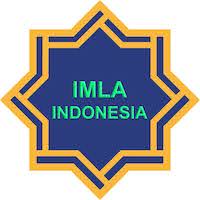Student Directive Speech Acts to Teachers and Peers in Arabic Language Learning
DOI:
https://doi.org/10.18592/jams.v11i1.12725Keywords:
Directive, Speech Acts, Arabic Language Learning OutcomesAbstract
This qualitative study aims to analyze students' speech acts in Arabic language learning using Miles & Huberman techniques of data analysis. The pragmatic approach based on the theory of speech acts of Bach and Harnish with passive participatory observation data collection techniques (passive participation). The data in this study included the directive speech acts employed passive participatory observation data collection techniques. The data in this study includes directive speech acts used by the students include requestives Speech Act used when asking, encouraging, and inviting, questions used when asking, investigating, and invoking, mandates used when giving orders and instructing, prohibitives used when prohibiting and advisories used when suggesting or asking permission.References
Apriastuti, Ni Nyoman Ayu Ari. “Bentuk, Fungsi dan Jenis Tindak Tutur dalam Komunikasi Siswa di Kelas IX Unggulan SMP PGRI 3 Denpasar.” Jurnal Pendidikan dan Pembelajaran Bahasa Indonesia 8, no. 1 (2019): 48–58. https://ejournal-pasca.undiksha.ac.id/index.php/jurnal_bahasa/article/view/2989.
Bach, Kent, and Robert M Harnish. “Communication and Speech Acts.” Cambridge, Mass.: Harvard, 1979.
Badelah, Badelah, Mahsun Mahsun, and Burhanuddin Burhanuddin. “Tindak Tutur Kesantunan Guru dan Siswa dalam Pembelajaran Bahasa Indonesia di SMP Negeri 2 Sakra: Tinjauan Pragmatik.” LINGUA: Jurnal Bahasa, Sastra, dan Pengajarannya 16, no. 2 (2019): 219–234. https://doi.org/10.30957/lingua.v16i2.604.
Basra, Sri, and Luthfiyatun Thoyyibah. “A Speech Act Analysis of Teacher Talk in an EFL Classroom.” International Journal of Education 10, no. 1 (2017): 73–81. https://www.learntechlib.org/p/208960/.
Brown, Amanda. “Monolingual versus Multilingual Foreign Language Teaching: French and Arabic at Beginning Levels.” Language Teaching Research 27, no. 6 (2023): 1634–1659. https://journals.sagepub.com/doi/abs/10.1177/1362168821990347.
Brown, Penelope, and Stephen C Levinson. Politeness: Some Universals in Language Usage. Vol. 4. Cambridge University Press, 1987.
Darwis, Agustina. “Tindak Tutur Direktif Guru Di Lingkungan SMP Negeri 19 Palu: Kajian Pragmatik.” Bahasa Dan Sastra 4, no. 2 (2018). http://jurnal.untad.ac.id/jurnal/index.php/BDS/article/view/12236.
Deveci, Tanju, and Ikhlas Ben Hmida. “The Request Speech Act in Emails by Arab University Students in the UAE.” Journal of Language and Linguistic Studies 13, no. 1 (2017): 194–214. https://dergipark.org.tr/en/pub/jlls/issue/36109/405457.
Diana, Ria Elva, and Ngusman Abdul Manaf. “Prinsip Kesantunan Berbahasa Dalam Tindak Tutur Direktif Guru Bahasa Indonesia Pada Proses Pembelajaran Di SMP.” Jurnal Basicedu 6, no. 3 (2022): 4940–4952. https://doi.org/10.31004/basicedu.v6i3.2759.
Hasanah, Septia Uswatun. “Tindak Tutur Direktif Guru dan Siswa pada Pembelajaran Bahasa Indonesia di Sekolah Menengah Pertama (SMP).” Jurnal Kajian Bahasa dan Sastra 1, no. 2 (2019): 51–56.
Hernández, Lorena Pérez, and Francisco José Ruiz de Mendoza. “Grounding, Semantic Motivation, and Conceptual Interaction in Indirect Directive Speech Acts.” Journal of Pragmatics 34, no. 3 (2002): 259–284. https://doi.org/10.1016/S0378-2166(02)80002-9.
Indis, Rudiny, and Mehdi Ahmed. “Ethnography of Communication in Arabic Language Learning.” Jurnal Al-Maqayis 9, no. 2 (2022): 117–146. https://doi.org/10.18592/jams.v9i2.6642.
Iswatiningsih, Daroe, Purwati Zisca Diana, and Anis Dwi Winarsih. “Teachers’ Directive Speech Acts to Motivate Junior High School Students in Indonesian Language Subjects after the Covid-19 Pandemic Online Classes.” KEMBARA: Jurnal Keilmuan Bahasa, Sastra, dan Pengajarannya 9, no. 2 (2023): 767–778. https://doi.org/10.22219/kembara.v9i2.29662.
Jundi, Muhammad, and Mohommed Ali. “Assessing the Classroom Learning in Arabic Matriculation Program: Tutor and Student Perspective.” Jurnal Al-Maqayis 10, no. 2 (2023): 21–36. https://doi.org/10.18592/jams.v10i2.9115.
Levinson, Stephen C. Pragmatics. Cambridge University Press, 1983.
Miles, Matthew B, and A Michael Huberman. Qualitative Data Analysis: An Expanded Sourcebook. sage, 1994. https://books.google.co.id/books?hl=id&lr=&id=U4lU_-wJ5QEC&oi=fnd&pg=PR12&dq=Qualitative+Data+Analysis:+An+Expanded+Sourcebook+&ots=kGTH-DMT_W&sig=gcZi29CKSrrBx10Po8x-YG4Mr-s&redir_esc=y#v=onepage&q=Qualitative%20Data%20Analysis%3A%20An%20Expanded%20Sourcebook&f=false.
Mukhroji, Muhamad, Joko Nurkamto, H D Edi Subroto, and Sri Samiati Tardjana. “Pragmatic Forces in the Speech Acts of EFL Speakers at Kampung Inggris, Indonesia.” Journal of Social Studies Education Research 10, no. 1 (2019): 38–60. https://dergipark.org.tr/en/pub/jsser/issue/45447/570402.
Puspitasari, Dyah. “Tindak Tutur Guru dalam Pembelajaran Bahasa Indonesia pada Kelas VII MTSN 4 Palu.” Jurnal Bahasa dan Sastra 5, no. 3 (2020): 80–93.
Qomariyah, Lailatul. “Tindak Tutur Direktif Guru dalam Pembelajaran Bahasa Arab.” Arabi: Journal of Arabic Studies 2, no. 1 (2017): 1–18. https://www.journal.imla.or.id/index.php/arabi/article/view/32.
Searle, John R. Speech Acts: An Essay in the Philosophy of Language. Vol. 626. Cambridge University Press, 1969.
Setiawati, Eti, and Heni Dwi Arista. Piranti Pemahaman Komunikasi dalam Wacana Interaksional: Kajian Pragmatik. Universitas Brawijaya Press, 2018.
Widiyarti, Handayani Eka, Akhyaruddin Akhyaruddin, and Andiopenta Purba. “Analisis Tindak Tutur Direktif Antara Guru Dan Siswa Kelas VII SMP Negeri 1 Muaro Jambi.” Edumaspul: Jurnal Pendidikan 6, no. 1 (2022): 177–185. https://doi.org/10.33487/edumaspul.v6i1.3053.
Yuan, Lingjie. “EFL Teacher-Student Interaction, Teacher Immediacy, and Students’ Academic Engagement in the Chinese Higher Learning Context.” Acta Psychologica 244 (2024): 104185. https://doi.org/10.1016/j.actpsy.2024.104185.
Downloads
Published
Issue
Section
License
Copyright (c) 2024 Naufal Akmal Syammary, Syifaussakinah Syifaussakinah, Fajar Nur Syah AlamAlam, Haris Furkon Hasbi

This work is licensed under a Creative Commons Attribution 4.0 International License.
Authors who publish with this journal agree to the following terms:
- Authors retain copyright and grant the journal right of first publication with the work simultaneously licensed under a Creative Commons Attribution License that allows others to share the work with an acknowledgement of the work's authorship and initial publication in this journal.
- Authors are able to enter into separate, additional contractual arrangements for the non-exclusive distribution of the journal's published version of the work (e.g., post it to an institutional repository or publish it in a book), with an acknowledgement of its initial publication in this journal.
- Authors are permitted and encouraged to post their work online (e.g., in institutional repositories or on their website) after the submission process, as it can lead to productive exchanges, as well as earlier and greater citation of published work.






